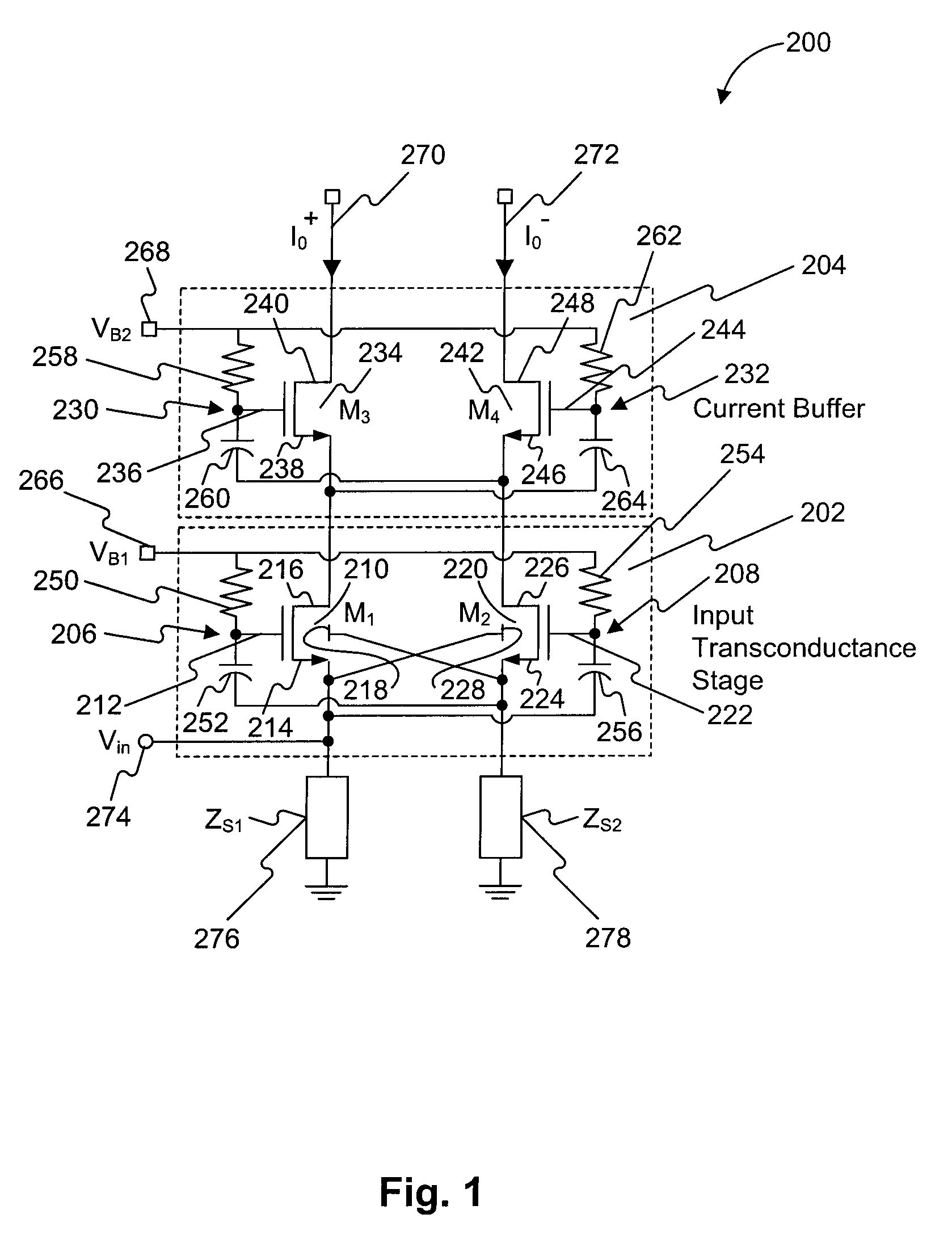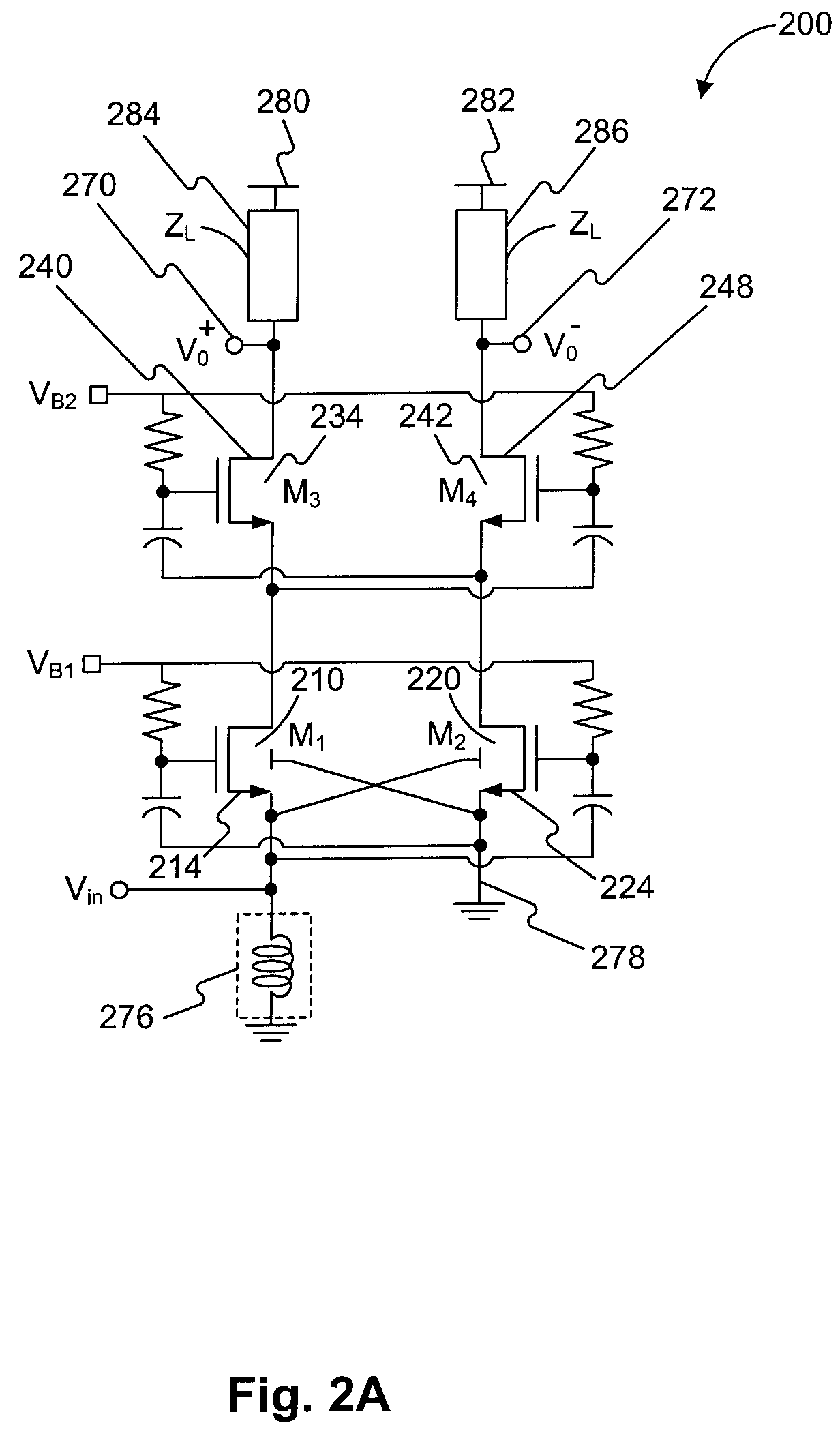Low noise amplifier
a low-noise amplifier and low-noise technology, applied in the field of amplifiers and circuits, can solve the problems of increasing the linearity requirement, the potential interference of an adjacent channel jammer, and the high noise level of broadband low-noise amplifiers
- Summary
- Abstract
- Description
- Claims
- Application Information
AI Technical Summary
Benefits of technology
Problems solved by technology
Method used
Image
Examples
Embodiment Construction
[0023]Reference will now be made in detail to exemplary embodiments, examples of which are illustrated in the accompanying drawings. The following description refers to the accompanying drawings in which the same numbers in different drawings represent the same or similar elements unless otherwise represented. The implementations set forth in the following description of exemplary embodiments consistent with the present invention do not represent all implementations consistent with the invention. Instead, they are merely examples of systems and methods consistent with aspects related to the invention as recited in the appended claims.
[0024]FIG. 1 shows a low-noise amplifier circuit 200 consistent with embodiments of the invention. Low-noise amplifier circuit 200 includes an input transconductance stage circuit 202 and a current buffer stage circuit 204, with input transconductance stage circuit 202 being cascode coupled to current buffer stage circuit 204, forming a cascode amplifie...
PUM
 Login to View More
Login to View More Abstract
Description
Claims
Application Information
 Login to View More
Login to View More - R&D
- Intellectual Property
- Life Sciences
- Materials
- Tech Scout
- Unparalleled Data Quality
- Higher Quality Content
- 60% Fewer Hallucinations
Browse by: Latest US Patents, China's latest patents, Technical Efficacy Thesaurus, Application Domain, Technology Topic, Popular Technical Reports.
© 2025 PatSnap. All rights reserved.Legal|Privacy policy|Modern Slavery Act Transparency Statement|Sitemap|About US| Contact US: help@patsnap.com



